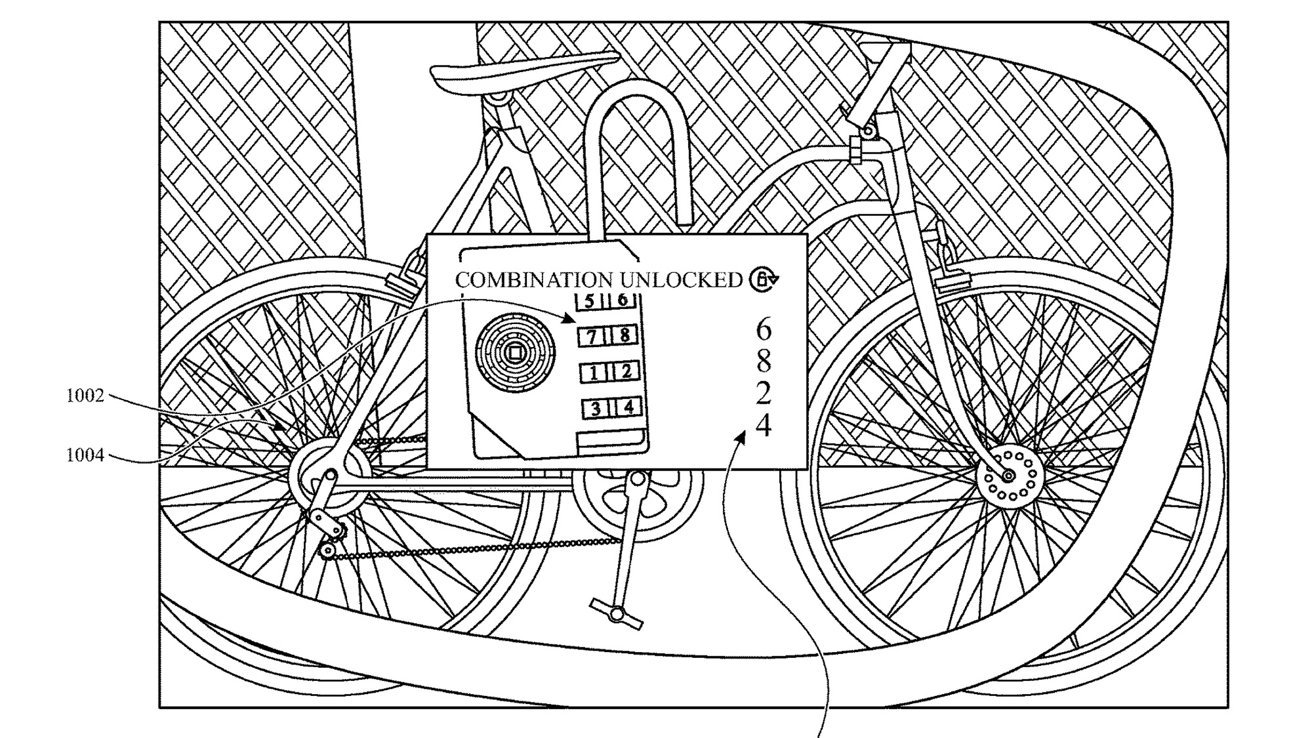Apple is researching how to bring the simplicity and security of biometrically protected passwords to real-world objects like bike locks, door codes, safes, and more with the help of iPhone or Apple Vision Pro.
In this patent Apple has plans to tackle the problem of having to remember real-world combination lock codes, door security codes, and more. The patent describes a process of simply looking at a physical object, seeing associated codes, and unlocking steps stored on the device.
Point an iPad or iPhone at the device, or simply look at it with an Apple Vision Pro or an iPhone using the upcoming iOS 18 glance detection feature called Eye Tracking, and the correct combination and instructions on unlocking it will appear.
For instance, a user could point their iPhone at their bicycle locked to a rack outside a store, look at that bicycle, and the iPhone would do the rest. It would detect the bike, verify that it’s an object for which the user has a stored combination, and then display the unlocking code and the steps to turn the dials correctly.
The Apple Vision Pro and the iPhone’s upcoming gaze detection are parts of Apple’s increasing embrace of Extended Reality (XR) technologies to combine virtual information with real-time, real-world input captured by a device’s cameras, microphones, and other sensors.
By harnessing the powers of eye tracking, an XR display of the correct codes could be placed over a real device. The process would be initiated simply by gazing at an object.
As another example, a user could approach a door with a push-button lock and see the correct code to open that lock and the steps to unlock it.
Different combination locks have different unlocking methods, which can be confusing. The dials must be turned in a pattern to unlock them in a traditional combination lock. Things like luggage locks and small safes use a series of dials that must be set to a specific number.
This tech would eliminate the fumbling and multiple attempts often needed to open even a simple luggage lock by providing step-by-step instructions.
Thanks to Apple’s tight integration of biometrics into devices, all it would take to see the combination or code would be to use Face ID or Touch ID just as you do to log into a website.
While the patent doesn’t describe many scenarios outside the bicycle lock, it only takes a little to imagine multiple ways this tech could improve daily life. It’s already possible to securely share passwords from many password apps.
Combine shared passwords with this technology, and someone caring for an elderly family member could store codes to unlock doors or the code of a locked box of important documents. An Airbnb owner could send a renter the code for a push-button door lock and explain how to use it.
The patent doesn’t explicitly discuss location awareness as a proposed object recognition method. However, since it addresses user orientation and context information about objects, location data could easily be part of the authentication process.
That Airbnb code can only be displayed when standing in front of the right door. An employee could be given the code to the petty cash safe only when in the right place in the office.
This technology would eliminate the need to remember numerous real-world codes and could allow for much more sophisticated physical locks. For example, only some people can remember a ten-digit code on a padlock, so few or none exist. Since password managers could store any length code, the potential would exist to create more secure locks with more digits.
This patent continues a patent filed in 2021, which covered storing contextual information about physical objects based on their shape, color, and location. This updated patent includes the techniques of displaying those codes to users and providing step-by-step instructions to unlock real-world items.
The upcoming iOS 18 operating system will bring with it a new Password app that would likely be used for any future real-world password management as well.
This patent was attributed to Brad K. Herman and Shiraz Akmal. Herman has patents in related areas such as contextual reminders, messaging based on real-world environments, and virtual object placement techniques.





